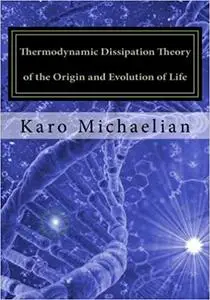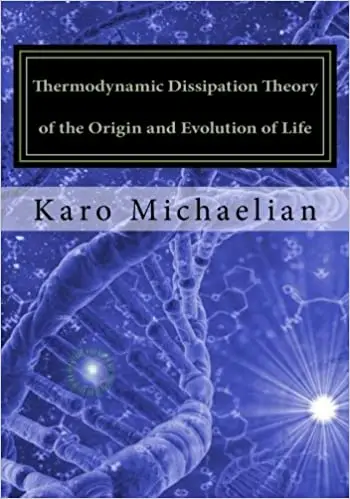Dr. Karo Michaelian, "Thermodynamic Dissipation Theory of the Origin and Evolution of Life: Salient characteristics of RNA, DNA and other fundamental molecules suggest an origin of life driven by UV-C light"
English | ISBN: 1541366719 | 2016 | 430 pages | PDF | 24 MB
English | ISBN: 1541366719 | 2016 | 430 pages | PDF | 24 MB
How did life on Earth arise, does life have a purpose, does life exist elsewhere in the Universe? These questions capture our imagination and although countless myths have been told, a plausible scientific explanation has resisted 160 years of vigorous research since Darwin suggested that life may have arisen in a little warm pond. In this book, award winning physicist Karo Michaelian reviews a bold new theory founded on non-equilibrium thermodynamic principles. Life is recognized as a thermodynamic process which could only arise, proliferate, and evolve by dissipating an external thermodynamic potential. Michaelian identifies this external potential as the ultraviolet photon flux arriving at Earth's surface during the Archean. The fundamental molecules of life are recognized as UV pigments which “self-organized” under this photon flux. The theory is drawing a lot of attention because of its ability to explain many of the salient characteristics of the fundamental molecules of life and because it suggests that life and evolution indeed have a purpose. Empirical data from epochs all the way back to the beginning of life and from some of Michaelian’s own experiments all support the new theory. The implications are serious for many contemporary paradigms concerning life and evolution. Even the cherished Darwinian paradigm, with its implicit metaphysical "will to survive", selection only at the level of the organism, and the inescapable tautology in "survival of the survivors" (irrespective of Popper's recanting) must be reformulated on thermodynamic principles, and the way to do this is presented in the book.Michaelian concludes that life similar, and not so similar, to our own should exist everywhere in the Universe wherever there exists the organic elements, UV-C light, and a dissipative solvent medium. In fact, he suggests that we have already discovered the beginnings of extraterrestrial life on other planets of our own solar system, and even within the galactic interstellar clouds of gas and dust, but have yet to recognize it as such under the old paradigms. A program for best searching for this extraterrestrial life at the different stages of its development is detailed within the book.Karo Michaelian has Ph.D. in physics from the University of Alberta, Canada and has worked at various research institutes throughout the world in topics ranging from nuclear physics and nanoparticles to complex systems and non-equilibrium thermodynamics. His book makes fascinating reading in understandable language for the serious amateur but also contains much detail, including mathematical derivation of thermodynamic principles, for the professional who wants an in-depth understanding. The book contains 430 pages with 142 images and diagrams and 434 references. A historical sketch of origin and evolution of life research is presented and critically analyzed, including; Ideas from Antiquity, Darwinian Theory, the Miller Experiments, the RNA World, Hydrothermal vents, Panspermia, and Gaia Theory. The thermodynamic foundations of the new theory are developed in the first 6 chapters and the corroborating evidence presented in the next 12. Another 2 chapters discuss contemporary paradigms in need of reform, and the last discusses the probable existence of dissipative life in other parts of the Universe. Mathematical demonstrations are left to boxes that can be skipped without much loss of continuity of argument. Analogies help to make the theory understandable to those who may not have formal training in mathematics or who lack an understanding of non-equilibrium thermodynamics.



